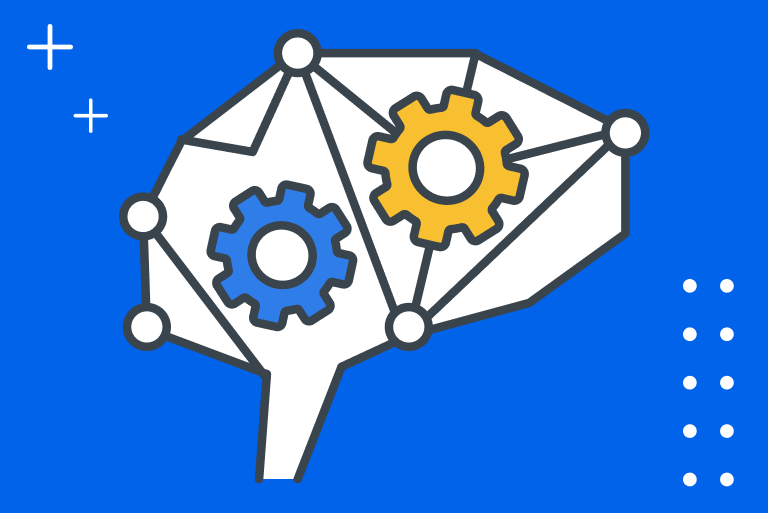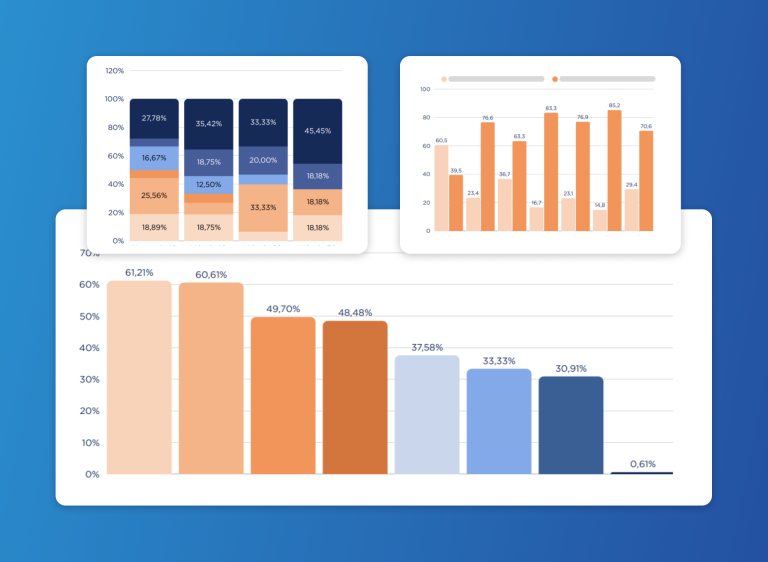Data-First Marketing is a new commercial technique that focuses on smart data use to create a tangible competitive advantage in any sector. If you’re not applying it to your eCommerce site, you should hurry before your competitors make their next move. It’s the perfect moment to implement it! In this post we will cover how you can start to adopt it today in 10 simple steps.
What Does “Data First” Mean?
Data First is a new marketing strategy based on the power of data. It completely focuses on smart data use in order to make informed business decisions that have a positive impact on profitability and financial outcomes. A Data-First strategy creates a tangible competitive advantage in any eCommerce sector.

Why was this concept born?
In recent years, CMOs and marketing teams have gone through a radical transformation in most companies. The integration of big data into the customer journey has made CMOs uncomfortable, as marketing specialists specialized in metrics have been forced to incorporate technical knowledge into their positions in order to keep them.
During the last few years, the independent market researcher Forrester has been discussing the role that CMOs will play in the future. And, at the same time, big companies have had to rethink the CMO’s role. Some of them have removed the role altogether. Others have assigned its functions to several positions or have incorporated it into other business areas.
There is a way to adapt to this new reality in order to keep the position of CMO alive and increase its value:
CMOs and marketing teams need to provide stakeholders with data that proves that marketing actions create revenue. And that’s where the Data-First approach comes into play.
As marketers, we must make informed strategic decisions. Intuition is fallible. William Edwards Deming said it best: “Without data, you are just another person with an opinion”.
10 tips to elevate your eCommerce platform using a Data-First approach
Despite all the challenges that a Data-First approach poses, benefits are huge and the effort is worth it. However, it’s important to know where to start and how to proceed when implementing it.
Data is an abundant resource nowadays, so first you should ask yourself a few essential questions:
- Which data should I prioritize?
- What kind of software/tech do I need?
- How will I create value with my insights?
- How will I track the value I create?
Here are 10 tips that’ll help you answer these questions. They will allow you to walk the Data-First path starting today, giving your eCommerce site a significant advantage over its competitors.
1. Put data first
Change your state of mind and results will also change. Immerse yourself in this new approach and keep your stakeholders aligned.
- Remember that change starts at the top (stakeholders).
- Create an ecosystem where failure is embraced.
- Make sure that everyone can have access to the data.
- End silos between managers and data geeks.
Whatever phase you’re in is okay. What really matters is that you start implementing changes today.
2. Trust your data
If you wanna tell a credible story, you’ll need to have reliable data.
- Define the data you need.
- Map and rate your current sources.
- Quickly solve any access problem.
- Optimize tracking constantly.
Make sure that your data is consistent, accurate, thorough and precise.
3. Choose a suitable solution
Define what you need. Then choose the tools that better suit your needs and help you scalate. Use the following key questions as a guide:
- How much time will the integration take? How will the learning curve to use and profit from the tool be?
- How will the team be impacted by the integration?
- How will the tool affect data collection and tracking?
Remember that Connectif can help you along the way. Our Data-First marketing automation platform can be integrated in a few minutes and used to put effective data-based strategies into action without needing to resort to your IT team or other tech experts.
4. Plan & define
Identify where you are and decide where you want to go. Make ongoing improvements and accept that change is neither immediate nor linear.
- Design your plan: starting point, goals and a step-to-step guide.
- Start tracking: don’t be afraid of data analysis. You might have not done it up until now, but that doesn’t mean you can’t do it.
- Choose your metrics wisely: sometimes some KPIs are not useful indicators when applied to practical cases.
5. Make the most out of your data
Learn to make the most out of big data from a marketing perspective and without depending on other departments, apps or technical experts.
- Create high-value segments. Prioritize the ones with the highest number of users in order to have a bigger impact.
- Use your data to improve content personalization and to increase notoriety and relevance.
- Track your most effective channel for every instance and deploy an omnichannel strategy that is focused on profitability.
6. Test & iterate
Data is non-refutable. Focus on objectivity. Plan your tests correctly.
- Make pertinent questions.
- Define the elements and facts that will help you answer them.
- Understand the results in a meaningful and actionable way.
- Keep in mind that all your hypotheses won’t be validated.
- Don’t fall for fallacies and biases (selective approach, false correlation, etc).
Remember that innovation requires conscientious experimentation. Do not improvise. Apply the scientific method at all times: Observation ➡️ Question ➡️ Hypothesis ➡️ Experiment ➡️ Conclusion ➡️ Result.
7. Deepen your metric research
Your business is unique. Your analysis should be too. If you want to have a competitive advantage, don’t do the obvious. Use data crossing techniques and deepen your research to get more data that can exclusively be applied to your company.
Choose tools like Connectif to enjoy the flexibility and freedom needed to explore advanced metrics as:
- RFM Analysis (Recency, Frequency and Monetary)
- CLV (Customer Lifetime Value)
- DORO (Direct & Organic Recurrent Order)
8. Visualize your data
Apply visualization to highly valuable data. Use it to illustrate conclusions and results as well.
Data isn’t useful by itself. You need to find a story within the data. Creating a story and making the data fit into it is not advisable.
9. Get ready to fail
Failure shines a light on what we need to improve. So remember: “The power of failure is what brings success”.
10. Start today
Things won’t radically change overnight. This is a process. If you start early, you’ll get results earlier.
Final Thoughts
Having a vision is being able to adopt new strategies before competitors overtake you. In the era of data, Data-First marketing is an obvious and sensible choice. Don’t stay behind! Big changes are uncomfortable, but they are usually the smartest choice.
Choose Connectif as your preferred tech solution. We will walk you through this new business and marketing phase. You can start applying the 10 tips above and results will naturally come soon. Request a demo today and we’ll explain what our platform can do for you Request Demo




